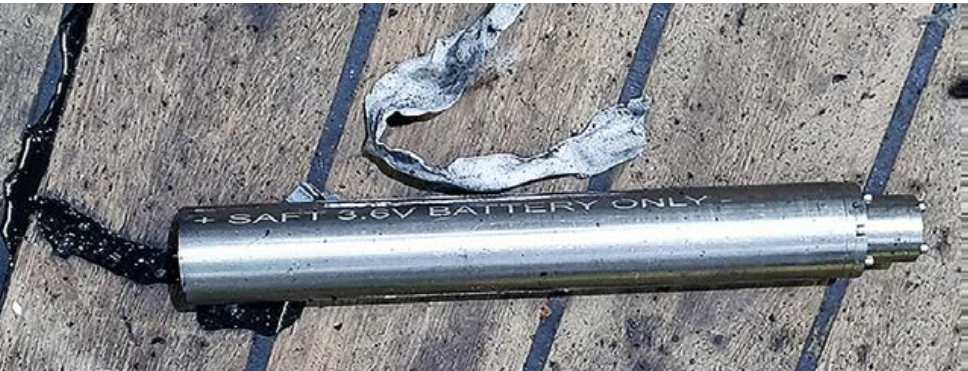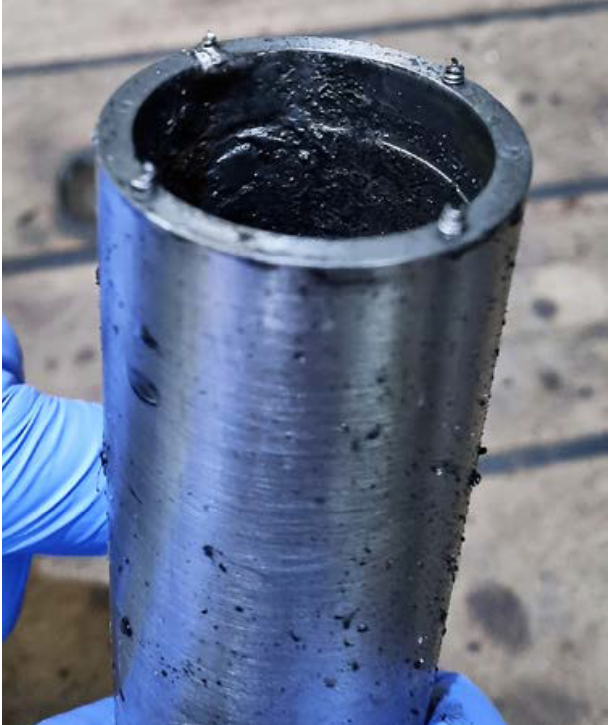MAIB: Lithium-ion battery fire
What happened
water got into Lithium-ion batteries in equipment for use subsea, causing an explosion. Inspection of the equipment after a successful deployment identified a potential leak from one of the metal tubes. However, other work priorities meant that the technician in charge of the equipment decided to leave it in its storage area and delay the removal and further examination of the battery. Seven hours later, the vessel’s bridge team heard a loud bang followed by a fire detection system warning for the deepwater equipment storage area. The attending crew members discovered a scorched and damaged metal battery tube lying on the deck. There were no injuries.


Examination of the battery tube indicated that sea water had leaked into the battery compartment and contaminated the Li-ion battery, which caused pressurised gasses to build up and self-combust and resulted in a brief explosion. The remaining battery tubes were removed to a secure storage area for further checks.
Lessons
- Lithium-ion batteries are widely used in IMCA members’ operations, and they are potentially very hazardous. A 1kg Li-ion battery can store the same amount of energy as a 6kg NiMH (Nickel metal hydride) or lead acid battery.
- Lithium-ion battery failures do occur; fires in Lithium-ion batteries can be difficult to extinguish.
- Lithium reacts intensely with water, which can corrode or damage the internal battery safety devices and cause it to overheat, ignite, rupture or leak. Some of the chemicals produced by burning Lithium-ion batteries can be very dangerous.
- A Li-ion battery that is found to be damaged or affected by water should not be used or charged. Remove the battery to a secure place where it can be monitored and potential spontaneous combustion can occur safely. In the event of a fire, use an appropriate fire extinguisher to put it out.
Members may wish to refer to
Safety Event
Published: 12 June 2023
Download: IMCA SF 14/23
IMCA Safety Flashes
Submit a Report
IMCA Safety Flashes summarise key safety matters and incidents, allowing lessons to be more easily learnt for the benefit of all. The effectiveness of the IMCA Safety Flash system depends on Members sharing information and so avoiding repeat incidents. Please consider adding [email protected] to your internal distribution list for safety alerts or manually submitting information on incidents you consider may be relevant. All information is anonymised or sanitised, as appropriate.
IMCA’s store terms and conditions (https://www.imca-int.com/legal-notices/terms/) apply to all downloads from IMCA’s website, including this document.
IMCA makes every effort to ensure the accuracy and reliability of the data contained in the documents it publishes, but IMCA shall not be liable for any guidance and/or recommendation and/or statement herein contained. The information contained in this document does not fulfil or replace any individual’s or Member's legal, regulatory or other duties or obligations in respect of their operations. Individuals and Members remain solely responsible for the safe, lawful and proper conduct of their operations.
